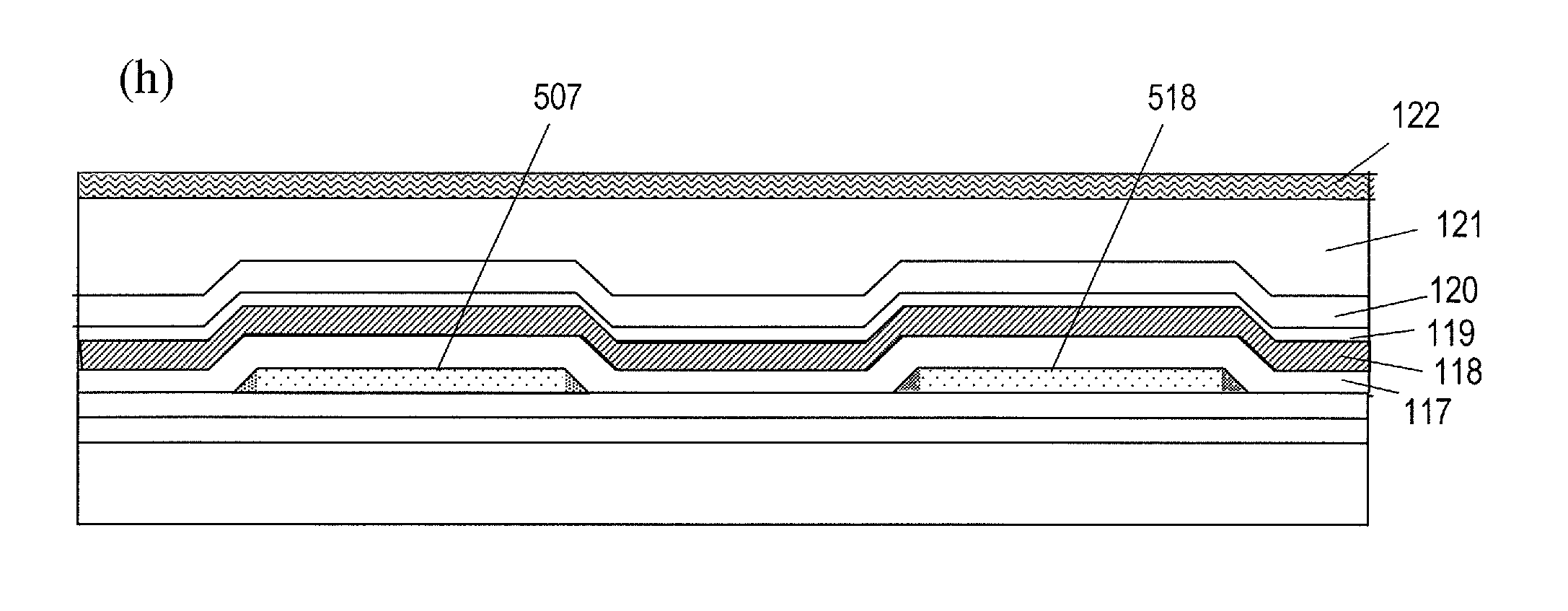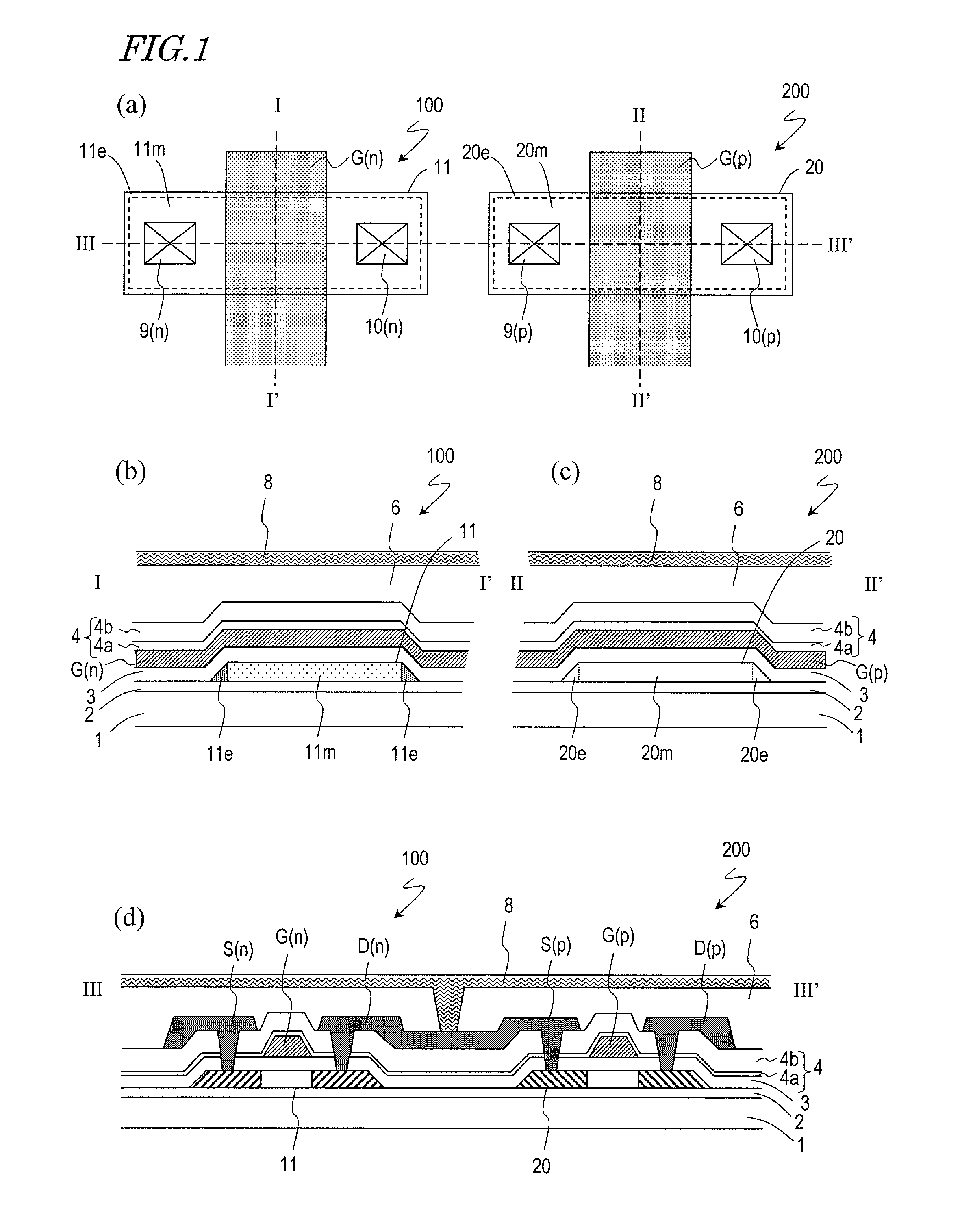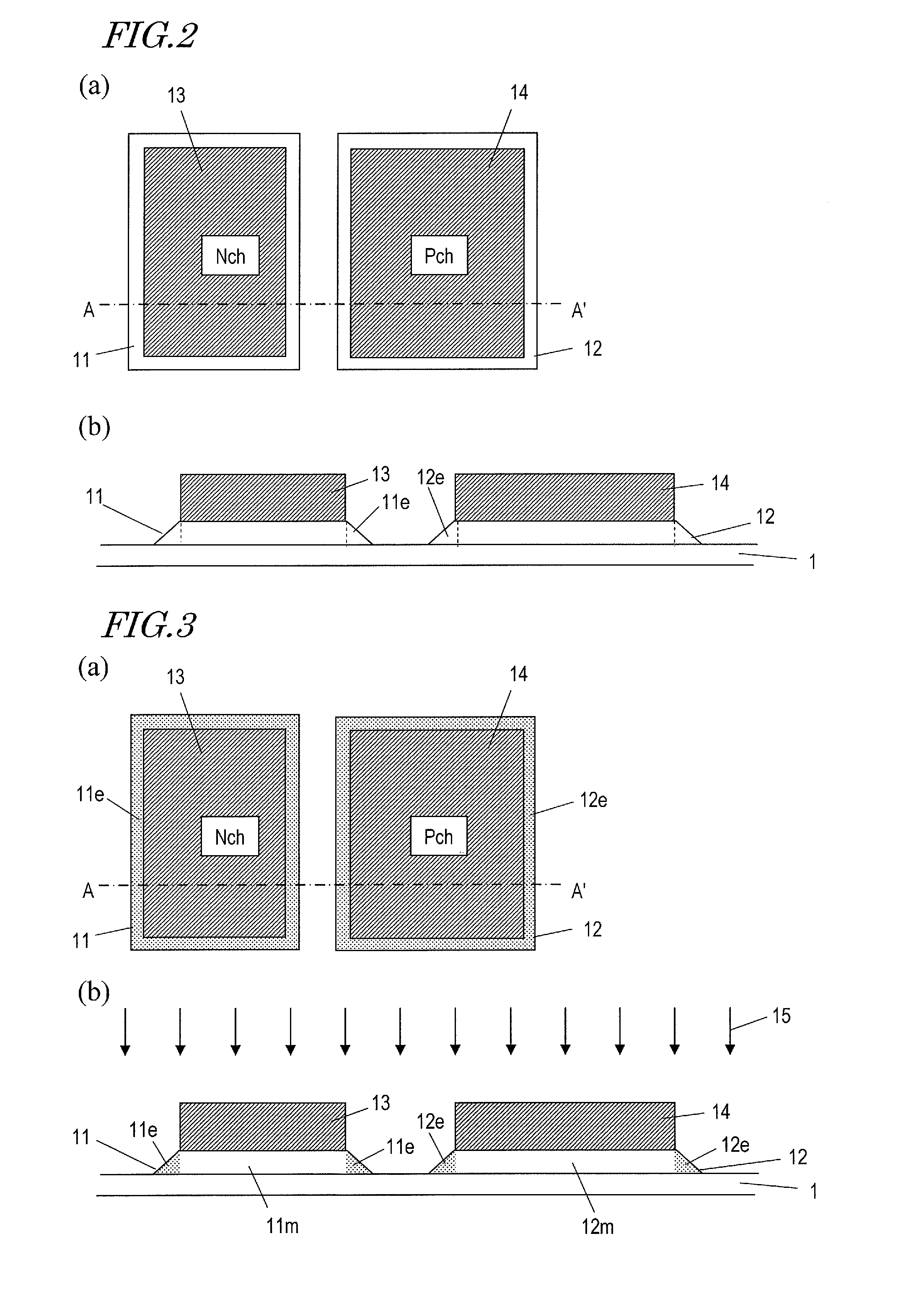Semiconductor device, and manufacturing method for same
- Summary
- Abstract
- Description
- Claims
- Application Information
AI Technical Summary
Benefits of technology
Problems solved by technology
Method used
Image
Examples
first embodiment
[0113]Hereinafter a semiconductor device in a first embodiment of the present invention will be described with reference to the drawings. The semiconductor device in this embodiment is applied to a substrate provided with a CMOS, e.g., an active matrix substrate provided with a driving circuit including a CMOS. Alternatively, the semiconductor device in this embodiment may be applied to an active matrix substrate in a display device in which a memory circuit including an n-type TFT and a p-type TFT is provided for each pixel.
[0114]FIG. 1(a) is a plan view schematically showing an n-type TFT and a p-type TFT in the semiconductor device of this embodiment. FIG. 1(b) and FIG. 1(c) are cross-sectional views taken along line I-I′ and line II-II′ shown in the plan view of FIG. 1(a), respectively. FIG. 1(d) is a cross-sectional view taken along line III-III′ shown in the plan view of FIG. 1(a). The line I-I′ and the line II-II′ are perpendicular to the channel direction, and the line III-I...
second embodiment
[0165]A semiconductor device in a second embodiment of the present invention will be described. The semiconductor device in this embodiment has the same configuration as that of the semiconductor device in the first embodiment described above with reference to FIG. 1. In addition, similarly to the first embodiment, to a portion of the slope portion of the n-type TFT which is capable of operating at least as a parasitic transistor, a p-type impurity is introduced with the density higher than the main portion of the n-type TFT.
[0166]The present invention and the first embodiment are different in the production methods thereof. Specifically, in the first embodiment, the patterning of the semiconductor layer of the p-type TFT is performed by two etching steps. In the present invention, the patterning of the semiconductor layer of the n-type TFT is performed by two etching steps. Accordingly, the doping condition of the p-type impurity in the slope portion of the respective TFT is differ...
third embodiment
[0195]A semiconductor device in a third embodiment of the present invention will be described. This embodiment is different from the above-described embodiments in that the semiconductor layers of the n-type and p-type TFTs have patterns in which the channel width is smaller than the width of the source and drain regions (so-called “dog-bone pattern”).
[0196]In the above-described embodiments, the island-like semiconductor layers which will act as the active layers of the n-type and p-type TFT have rectangular patterns. However, in the actual circuit, especially in a memory circuit such as an SRAM circuit or a DRAM circuit included in the pixel, an island-like semiconductor layer having a pattern with a small channel width is often used. In such a case, in the island-like semiconductor layer, the width of a channel region (the channel width W) is smaller than the width of a region for forming a contact hole in the channel width direction. That is, the pattern of the semiconductor lay...
PUM
 Login to View More
Login to View More Abstract
Description
Claims
Application Information
 Login to View More
Login to View More - R&D
- Intellectual Property
- Life Sciences
- Materials
- Tech Scout
- Unparalleled Data Quality
- Higher Quality Content
- 60% Fewer Hallucinations
Browse by: Latest US Patents, China's latest patents, Technical Efficacy Thesaurus, Application Domain, Technology Topic, Popular Technical Reports.
© 2025 PatSnap. All rights reserved.Legal|Privacy policy|Modern Slavery Act Transparency Statement|Sitemap|About US| Contact US: help@patsnap.com



